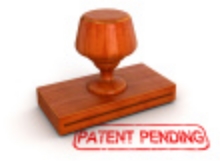
Patent Marking-Is It Advisable?
Recently, one of my clients asked me about the pros and cons of marking “patent pending” on his invention. I advised him that I thought he should mark his invention and here’s why.
First, it puts others on notice that you intend to protect your invention with a patent. That means that if the patent covering your product issues, then others will need to assess whether they infringe your patent, if they use, make, sell, or offer for sale the product as described in the issued patent.
Second, while marking “patent pending” has no legal effect, when and if the patent issues, display of the patent number does impact your legal rights. Failure to mark your invention, once a patent issues, will prevent you from collecting damages until you either begin marking or you give actual notice of patent infringement.
Third, if you are putting others on notice that your product may be patentable, that may be advantageous when talking to investors or potential licensees. If your product becomes protected via a patent, then you have exclusive rights to exploit your patent for a period of 20 years from the date of filing. This may be a significant business advantage depending on the area of technology and existing business environment.
Finally, patent marking can be done either physically on the product itself or virtually. Virtual marking requires a website where information on patented products for your organization can be found. This saves in retooling time and expense. In addition, changes to the website can be done quickly and easily to maintain a complete and accurate record of all patents covered by your company.
Protecting your innovative developments is critical to any organization. Having the right person to help you make that decision is important. The Law Office of Kathleen Lynch PLLC is designed to help businesses such as yours keep ahead of the game. The first telephone consultation is free. Email us at [email protected].




